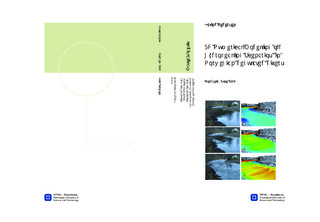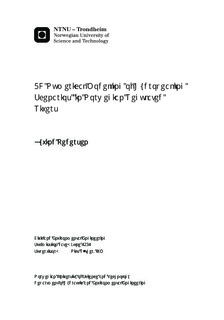| dc.contributor.advisor | Rüther, Nils | nb_NO |
| dc.contributor.author | Pedersen, Øyvind | nb_NO |
| dc.date.accessioned | 2014-12-19T12:31:48Z | |
| dc.date.available | 2014-12-19T12:31:48Z | |
| dc.date.created | 2012-11-08 | nb_NO |
| dc.date.issued | 2012 | nb_NO |
| dc.identifier | 566171 | nb_NO |
| dc.identifier | ntnudaim:7176 | nb_NO |
| dc.identifier.uri | http://hdl.handle.net/11250/242234 | |
| dc.description.abstract | AbstractThe objective of this master s thesis has been to investigate the capabilities of the CFD packages Star CCM+ and SSIIM to model hydro-peaking scenarios in regulated natural rivers in 3D using a RANS method. Two Norwegian regulated rivers are modeled, Surna and Lundesokna. In Surna, flow fields and bed shear-forces are compared for the Star CCM+ and SSIIM models. In Lundesokna flow fields and water surface elevations from simulations in Star CCM+ are compared to field data at steady flow conditions. For unsteady flow a Star CCM+ simulation are compared to video footage of a hydro-peaking event. The Surna Star CCM+ numerical model predicts a comparable flow field to SSIIM for both steady and unsteady flow. The magnitudes of velocities and shear-forces, however, deviate. Unphysical velocities and shear forces were found in parts of the cells in the Star CCM+ model. A review of the model shows that the unphysical velocity errors are likely caused by a too coarse grid and problems with the VOF method. Efforts to run simulations on a finer grid were discontinued because of a lack of available computational resources. Both the Surna numerical models achieved convergent solutions for unsteady flow. However, due to the quasi-unsteady treatment of the flow in SSIIM the SSIIM model is not able to capture wave effects. In consequence the SSIIM model predicts peaks about 600 seconds earlier than the Star CCM+ model for unsteady flow. When accounting for this effect the models show similar flow fields but deviating velocity and shear-force magnitudes as for the steady flow.Comparison to field data show that the Lundesokna Star CCM+ model is able to predict flow fields and water surface elevation with high accuracy for steady flow between 10 m3/s and 20 m3/s discharge. The unsteady flow simulation shows visual resemblance with the video footage, however, field data measurements are required to quantify the accuracy of the numerical model for transient conditions. | nb_NO |
| dc.language | eng | nb_NO |
| dc.publisher | Institutt for vann- og miljøteknikk | nb_NO |
| dc.subject | ntnudaim:7176 | no_NO |
| dc.subject | MTBYGG Bygg- og miljøteknikk | no_NO |
| dc.subject | Vassdragsteknikk | no_NO |
| dc.title | 3D Numerical Modelling of Hydropeaking Scenarios in Norwegian Regulated Rivers | nb_NO |
| dc.type | Master thesis | nb_NO |
| dc.source.pagenumber | 123 | nb_NO |
| dc.contributor.department | Norges teknisk-naturvitenskapelige universitet, Fakultet for ingeniørvitenskap og teknologi, Institutt for vann- og miljøteknikk | nb_NO |

